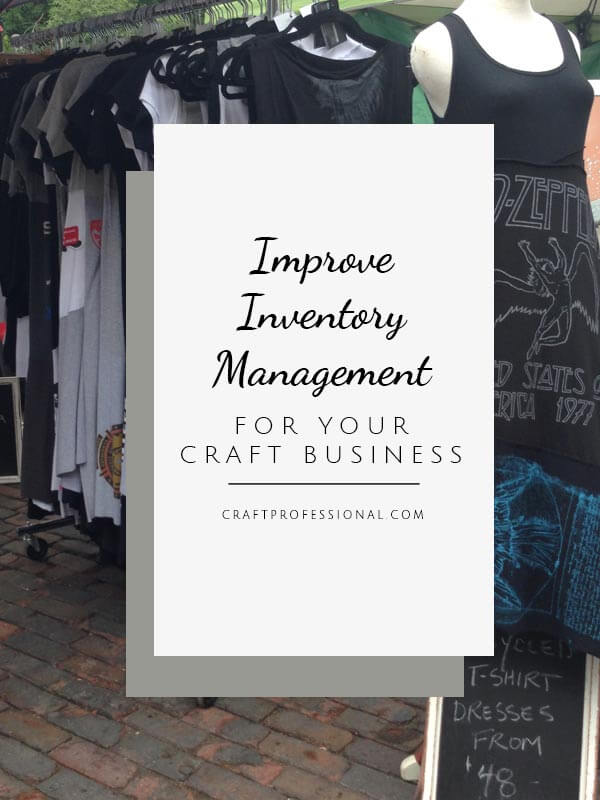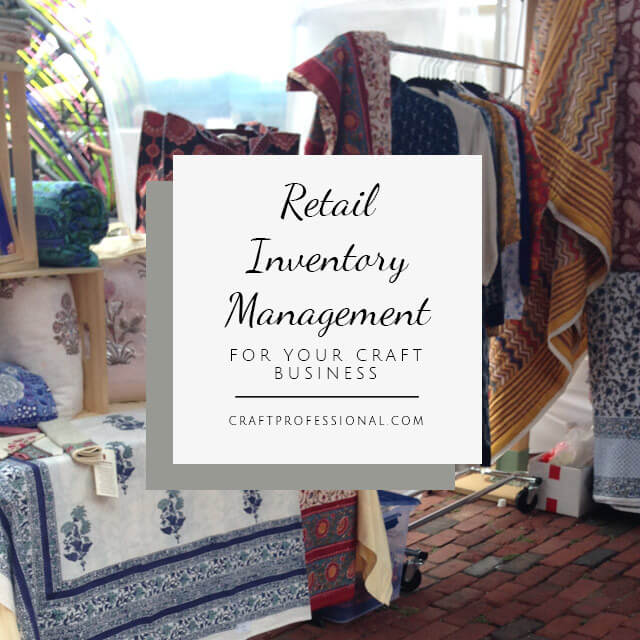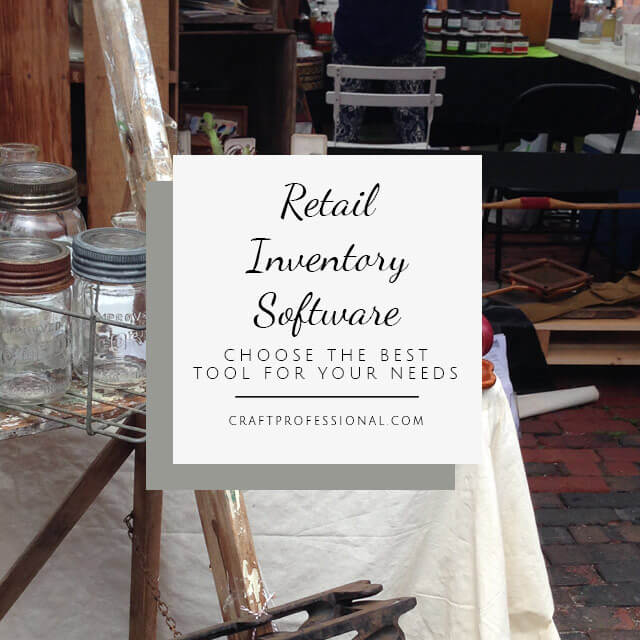Improve Inventory Management for Your Craft Business
Let's be completely honest here. Working to improve inventory management for your craft business, especially if you use a lot of different raw materials or make a lot of varied products, can become a gigantic pain.
When I started my business, many years ago, I struggled with the issue and tried several inventory management tools. I'd been self employed in a service-based business for years, and managing that was a breeze. It seems, once you have a physical inventory to keep track of, business management can suddenly become much more complex.
My business has changed, so these issues don't present the same difficulties, but at one time it was quite a big challenge I needed to work out. Here's what I learned through my own experience after a whole lot of trial and error.
You Must Meet Your Government's Legal Requirements
You're not just tracking this data for the health of your business. As a business person, your government requires you to track certain data, and it's important to get this right.
Whatever tool you use to improve inventory management within your business, make sure you've met the tax / legal requirements for tracking inventory and sales in your location. I am not an expert on this subject, and the requirements will vary depending on where your business is based, so I strongly suggest you talk with an accountant who can get you on the right path. Also, see if there's a business development office in your area. They will help you discover what you need to do to meet legal requirements for keeping your data in order.
When I launched my business many years ago, the business development office in my area was extremely helpful. They sponsored seminars by the Canada Revenue Agency (for my American readers, the CRA is the Canadian equivalent of the IRS). I learned all kinds of valuable information and made good contact with people who could help me with additional questions.
I also found a reliable accountant. In my mind, working with an accountant is just part of the cost of running a business. My accountant is wonderful. He provides professional advice at a completely affordable price.
Do It Right From the Start
One of the best pieces of advice received in a business management seminar hosted by my local business development office and presented by staff from the Canada Revenue Agency is to get your tracking set up correctly from the start.
It is much easier to do it right from the start then to go back and fix it later.
The sooner you set up your tracking system, the less you'll need to go back and work out data from the past.
My ExperIence With Tracking Tools to Improve Inventory Management
My business has changed significantly, but back when I was selling handmade jewelry, tracking supplies and finished product was a huge challenge. I used all kinds of raw materials. I bought from all kinds of suppliers, including suppliers out of my country, so I was dealing with different currencies. I made a lot of different designs at completely different price points.
It was extremely complex. Organization is not my strong suit, so it was unnecessarily complex.
I tried a few tools with varying degrees of success, but in the end, I used an Excel spreadsheet set up to my own specific needs. Keep in mind, this goes back a few years, and the tools available to craft professionals at the time were not as numerous or sophisticated as they are today.
I've detailed several inventory management software solutions here.
Use a Meaningful Numbering System
One thing I learned early on was it is wise to assign a number to each item for tracking, and use a numbering system that provides useful information. If, for example, you have your items listed on an Etsy shop, consider using the Etsy listing number to identify each item.
Use those numbers in your storage system. Any numbers or labels you use to identify items in your inventory management software also need to be used in your storage. This setup allows you to identify items clearly and find items quickly. If you sell on an online marketplace like Etsy, identifying and storing items by listing numbers will minimize the chance of sending the wrong item.
Whatever numbers you use to identify items in your inventory management software should also appear on your item in storage in some way.
I used a combination of numbers and photographs since I had so many one of a kind items to keep track of, and I was selling on consignment, so I needed to communicate with others about specific items. I simply included a small thumbnail image with each entry in my system, and the photos helped to clearly identify items.
Keep it as Simple as You Can While Still Gathering all of the Information You Need
Your inventory management system can quickly get very complex. Take some time to develop a clear idea of what you need to collect to satisfy business laws in your area, and to provide the information you need to run your business effectively so you're not wasting time and motivation collecting information that doesn't help your business in any way.
The more you can streamline your system, and built it into your business routines, the more likely you will keep it current.
Keep it Up. Don't Skip Making Entries.
Make it as simple as possible to collect your data. It's tempting to skip updating your system, but it is so much easier to keep it up than to go back and play catch-up. Build in routines and habits that mean updating your data is part of your process when you create new items and make a sale.
How I Changed My Process to Improve Inventory Management

I quickly discovered a whole lot of complexity in my business that I wanted to minimize. The more simple and streamlined my system was, the easier it was to keep it up.
I discovered the more variety of raw materials, and the more variety of finished product I used, the harder it was to keep up an inventory management system. I looked for ways to simplify without compromising the finished product.
Limiting Suppliers
The more variety of suppliers I used, the tougher it was to remain organized. I started out using a lot of suppliers; some were not particularly reliable, and finding supplies took up a whole lot of my time. In the end, I settled on two suppliers, one a fairly local wholesaler I could visit easily and quickly get supplies I needed, and one an online wholesaler who had a massive inventory and competitive prices, so I could get almost anything I wanted, but I'd have to wait for delivery.
Streamlining in this way saved a huge amount of time and simplified the management of my raw materials.
Limiting Raw Materials
I also worked to minimize the raw materials I used by creating a smaller range of specific designs, and eventually, I changed the materials I worked with. This option is definitely not for everyone because it can mean big changes in your end product. But it was right for me, and it made a lot of things easier to manage.
If you work with a limited range of raw materials already, your raw materials probably don't present a big issue, but if you work with a huge range of materials, like many readers do, for example, you may want to consider limiting the range of raw materials you use.
In the end, you may decide you don't want to make that type of change in your product, and you're willing to spend a little more time managing raw materials to maintain your current design choices. That's perfectly fine too. Just take a little time to think through the issue to come to a decision that's best for you and your business.
Moving Forward
I wish there were a simple one size fits all solution to improve inventory management I could recommend to everyone. Because the nature of craft businesses vary so much, there isn't a single option I've found. I have found quite a few options that will be right for different people in different situations.




New! Comments
Have your say about what you just read! Leave me a comment in the box below.